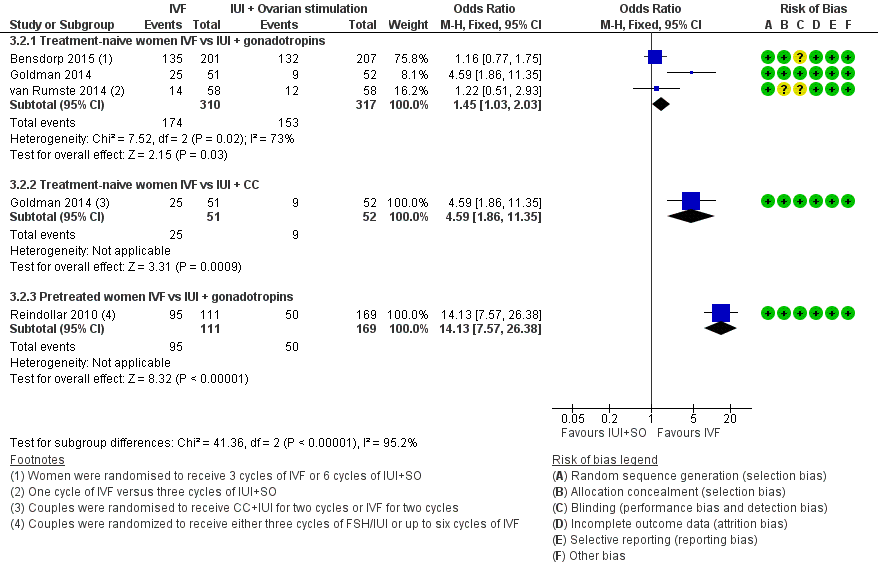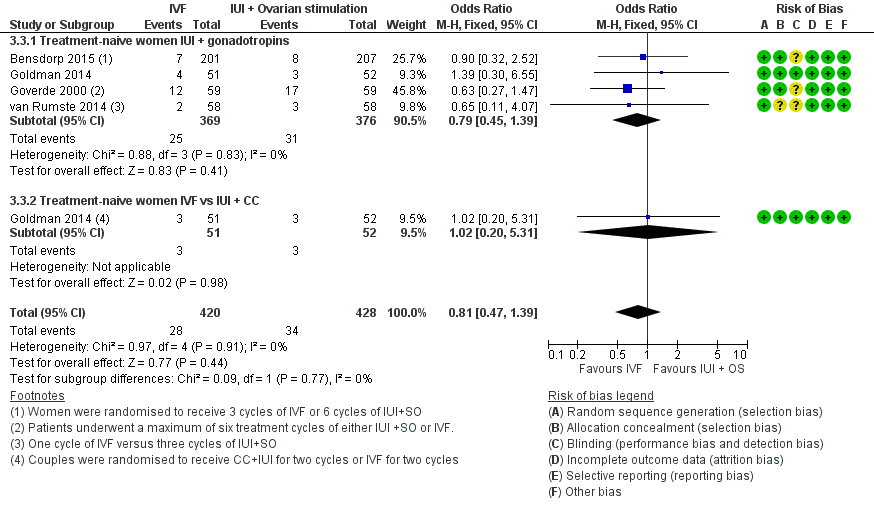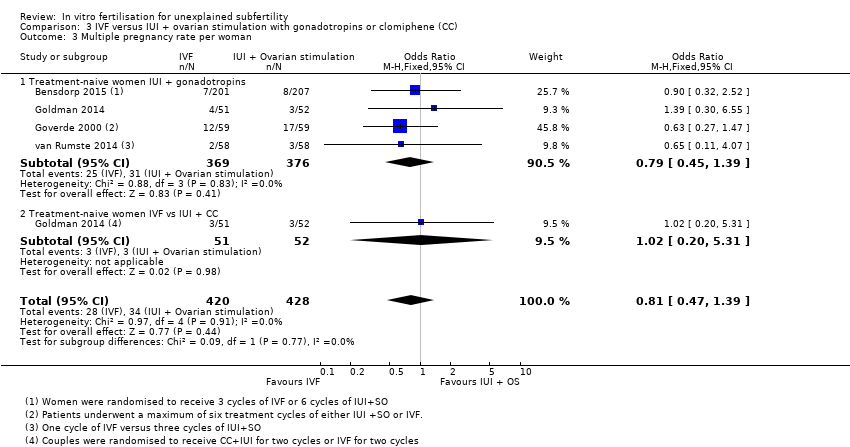Contenido relacionado
Revisiones y protocolos relacionados
Sesh Kamal Sunkara, Mohan S Kamath, Zabeena Pandian, Ahmed Gibreel, Siladitya Bhattacharya | 27 septiembre 2023
Reuben Olugbenga Ayeleke, Joyce Danielle Asseler, Ben J Cohlen, Susanne M Veltman‐Verhulst | 3 marzo 2020
Esmée M Bordewijk, Marleen Nahuis, Michael F Costello, Fulco Van der Veen, Leopoldo O Tso, Ben Willem J Mol, Madelon van Wely | 24 enero 2017
Edward Hughes, Julie Brown, John J Collins, Patrick Vanderkerchove | 20 enero 2010
Lars W Westergaard, Patrick MM Bossuyt, Fulco Van der Veen, Madelon van Wely | 16 febrero 2011
Mohan S Kamath, Abha Maheshwari, Siladitya Bhattacharya, Kar Yee Lor, Ahmed Gibreel | 2 noviembre 2017
Salim Daya, Abha Maheshwari, Charalambos S Siristatidis, Siladitya Bhattacharya, Ahmed Fathy Gibreel | 24 enero 2000
Rui Wang, Nora A Danhof, Raissa I Tjon‐Kon‐Fat, Marinus JC Eijkemans, Patrick MM Bossuyt, Monique H Mochtar, Fulco van der Veen, Siladitya Bhattacharya, Ben Willem J Mol, Madelon van Wely | 5 septiembre 2019
Nat Athaullah, Michelle Proctor, Neil Johnson | 22 julio 2002
Abigail Sharpe, Lara C Morley, Thomas Tang, Robert J Norman, Adam H Balen | 17 diciembre 2019
Respuestas clínicas Cochrane
Charalampos Siristatidis | 5 diciembre 2016




















